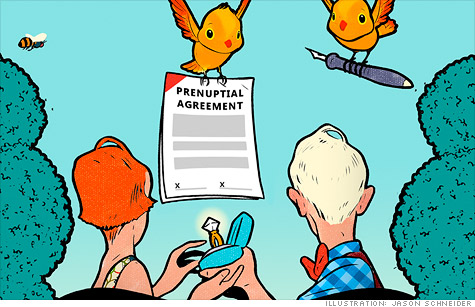Marvel Season One Exclusive First Look
by Brian Truitt USA Today Jul 19, 2011
Marvel Comics

1. Get online, for real. Reinvention these days is digital. You're not too old to learn social media, and it's not too hard. In fact, technology has become more, not less, accessible. So get going!
2. Start from scratch. In the Age of Disruption, we're all starting from scratch. Don't get hung up over it -- embrace it. (Anyhow, you don't have a choice.)
3. Learn by doing. Don't worry about being perfect before you post something or try out a new site. The beauty of the medium is that there's often no right answer -- so you won't be wrong.
4. Share the wealth. Competitive advantage used to be about keeping a juicy nugget to yourself. But today knowledge is practically a commodity. Sharing raises your personal brand and connects you to others on a higher level. (Now go post this article.)
5. Cut back fast. To change your career, you need to be financially fit. So forget about status; the neighbors will be more impressed by your reinvention than your country club.
6. Prioritize your passions. The great thing about remaking yourself is that you can jettison all those things that you hate. Plot your passions and skill sets, and see if it gets you to a new place.
Sites that spark new thinking:
1. LinkedIn. Click on the groups tab, join as many "groups you may like" as possible in your areas of interest, and check out their discussions.
2. Twitter. Follow the experts who link to info about your professional interests. It's like hiring smart people to curate the news for you -- free.
3. Meetup is about bridging the online/offline divide with groups of people who share interests, then actually get together in real life.
4. YouTube. Type in"How to [fill in the blank]," and you'll find video after video explaining it. The results can be hit or miss, but the hits are fantastic.

Then a little company named Netflix (NFLX) came up with a new and disruptive business model for renting videos, and soon it would harness the technology behind delivering movies over the web. Kahn was about to be Blockbusted. He was in jeopardy of losing his financial security, his self-respect, his professional life. He would have to reinvent himself -- or the world would do it for him.
Feel a chill of recognition while reading this story? Thought so. In this "Age of Disruption," Kahn's story is hardly unique. If you haven't actually been Blockbusted yet, you've doubtless lost sleep over what you'll do if/when it finally happens.
We live and work in a time when technology has made it easier for new companies to be born. That's the good news. The bad news is that increase in productivity has fueled multiple rounds of job cutting. Add to that the lingering wreckage of the financial crisis and the fits-and-starts recovery, and it's clear that job change is the only constant.
Job creation is at its lowest point since 1980, while job destruction continues to rise. A full 12.6% of the workforce lost their jobs in the past recession, according to the Bureau of Labor Statistics' Displaced Worker Survey. That's the highest rate since at least 1981.
What all these data points make crystal clear is that the very nature of jobs in America has changed. Pensions? An ancient relic. Steady progression up the corporate ladder? Yeah, right. We're living in a project-based economy, one moving from full-time employment with benefits to part-time employment with project-based assignments.
Here's proof: By the end of 2010, the number of people working part-time because they couldn't find full-time work had nearly quadrupled since the 1950s, to 2.38 million people. "It's a spot auction market," says Robert Reich, former secretary of labor under Clinton and the chancellor's professor of public policy at the University of California at Berkeley. "What you're paid is what you're worth at that particular time."
That means you will change your professional identity frequently -- maybe even as often as you spruce up the look of your living room. The youngest baby boomers (those born from 1957 to 1964) held an average of 11 jobs from ages 18 to 44, according to the Bureau of Labor Statistics. The Denali Group, a procurement-services company, predicts that Generation Y will have 15 to 25 jobs in their lifetime. "This can be a very exciting world," Reich says. "In many ways, it's much better than the old world that was more seniority-based, where you tended to work on the same thing for many years."
Exciting if you're in your early twenties. But not so much, Reich adds, if you're an expert in your field, if college tuition is looming, if you aren't as able to relocate as you once were. There's just one way to achieve true job security: stand ready to reinvent yourself -- no matter what your age, your education, your skill set, or the color of your collar -- sometimes more than once.
But how?
To find out, we scoured the country to find people who have been disrupted but have managed to create a new career story. Those profiled here have successfully reinvented themselves -- not because they wanted to, but because they had to. They are not 25-year-old techies; they are established professionals who were happy doing what they were doing -- until they weren't doing it anymore.
The reason some people have become successful reinventors is more about attitude than experience: One thing they all have in common is that they love learning by doing. They have come to embrace the future, using new technologies, particularly social media, to help them leverage their own professional skills. And they are not victims. At a time when many people react passively to career bumps, our reinventors took control. Read on for 5 career makeover success stories
by Douglas Alden Warshaw Fortune Magazine June 21, 2011
FORTUNE -- Reality TV star Kim Kardashian isn't often held up as a model of prudent behavior. But the recent reports that she and her fiancé, NBA forward Kris Humphries, are working out a prenuptial agreement make her the celebutante face of a practical new trend. Prenups are on the rise. And they aren't just for the wealthy and famous these days.
A prenup is a legally binding contract that spells out how a couple's assets will be carved up if their marriage fails. Nearly three-quarters of attorneys surveyed in 2010 by the American Academy of Matrimonial Lawyers said they had seen a marked increase in prenups in recent years. A key reason: The financial crisis left people anxious to protect what they have. A glance at marriage statistics underscores the importance of planning ahead. Almost half of all first marriages end in divorce, and the divorce rate on subsequent unions is even higher.
Separate property includes assets owned by each spouse prior to the marriage, as well as inheritances received during the union. You typically get to keep the original value of your separate property, but in many states you must share any appreciation with your spouse. For instance, your spouse could lay claim to part of the increased value of a house you brought into the marriage -- especially if marital income was used to pay the mortgage or make improvements. And if your business blossomed during the marriage, your spouse could be entitled to a major chunk of its new worth.
A prenup allows you to override state laws, provided that it's properly executed. For instance, legal experts recommend that it be signed at least 30 days before the wedding, to avoid the appearance of coercion -- a key reason prenups are tossed out by courts. It's also crucial that each spouse be represented by his or her own lawyer. In the end, a prenup may not be the most romantic relationship move you'll ever make, but it could be the most valuable.
by Janice Revell Fortune Magazine June 29, 2011







photo by Tharrin
photo by MartyCTX
The Darth Vader Balloon is an 86 foot tall hot air balloon replica of Darth Vader’s helmet. Belgian balloonists Benoit and Michel Lambert commissioned specialty manufacturer Cameron Balloons to build the Darth Vader Balloon in 2007 (of course, only after receiving the official Lucasfilm OK). The Lamberts now pilot the balloon in appearances all over the world. It will be featured at the Great Reno Balloon Race, September 9-11, 2011.
by Edw Lynch Laughing Squid July 14, 2011




The dust wall that hit Phoenix on July 5, was more than a mile high and some 50 miles wide. Before it was over, Sky Harbor International Airport was closed down, driving was hazardous and severe storm warnings were out for much of Central and Western Arizona.
It was the largest dust storm in the area in several decades.